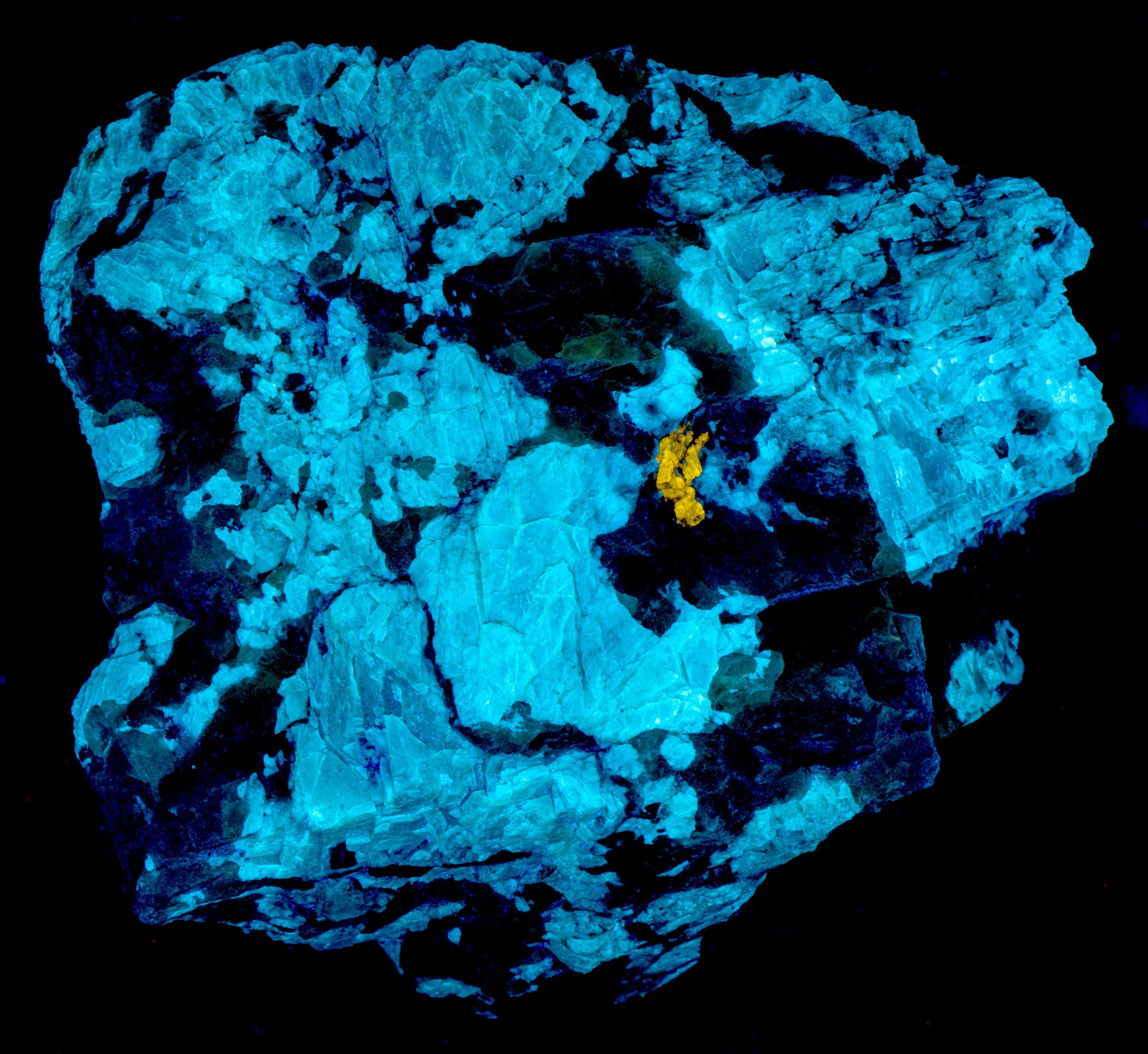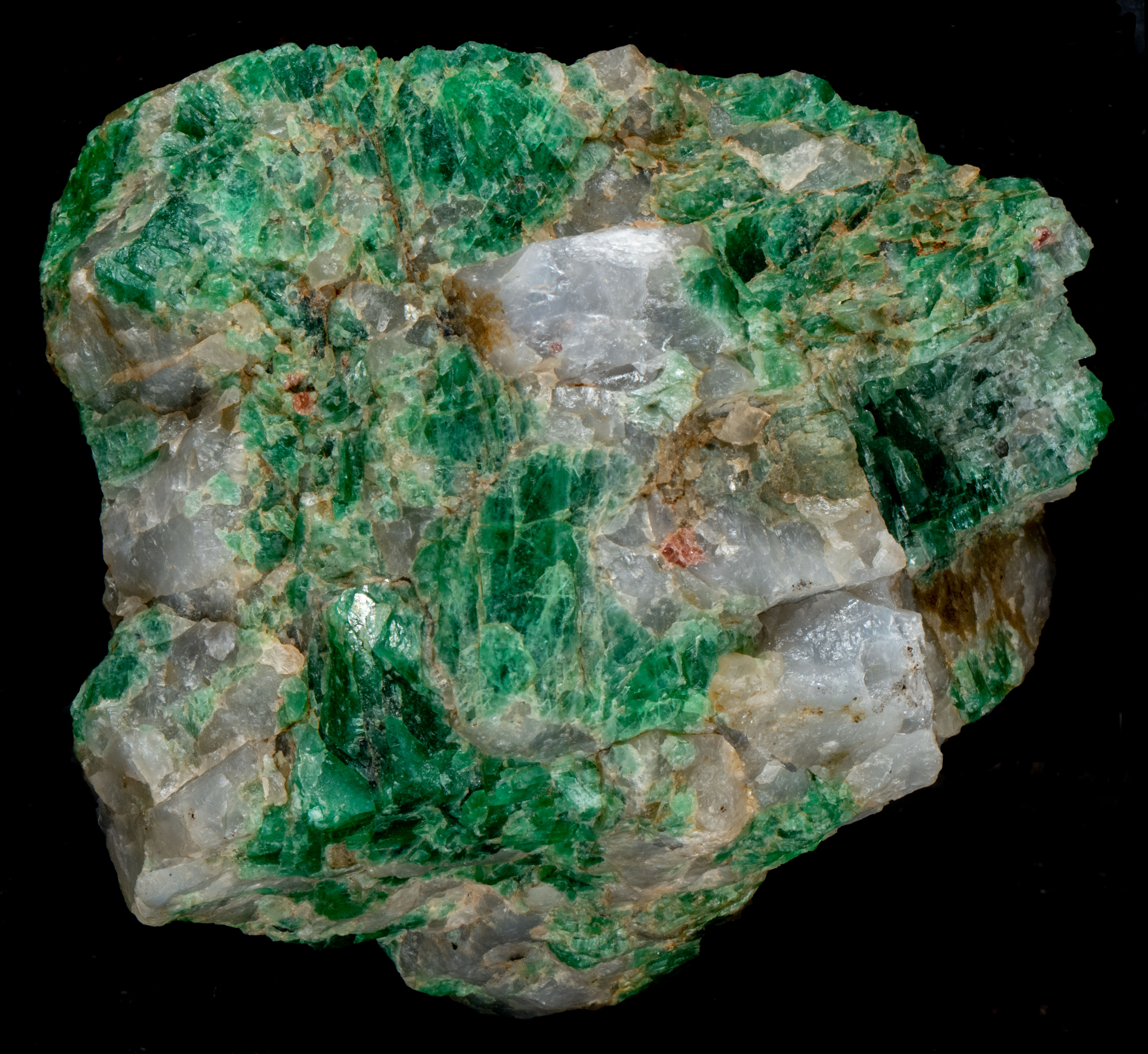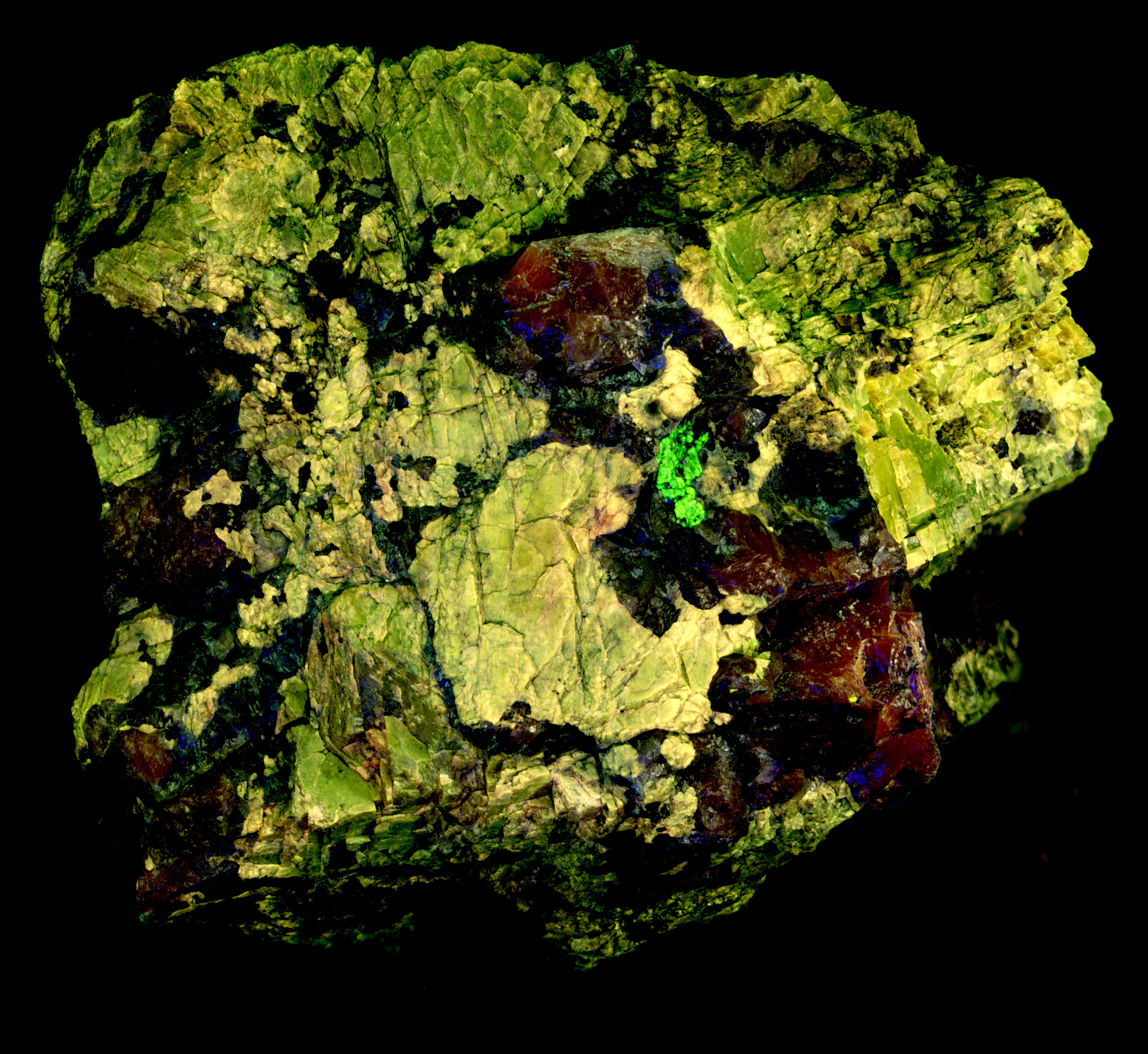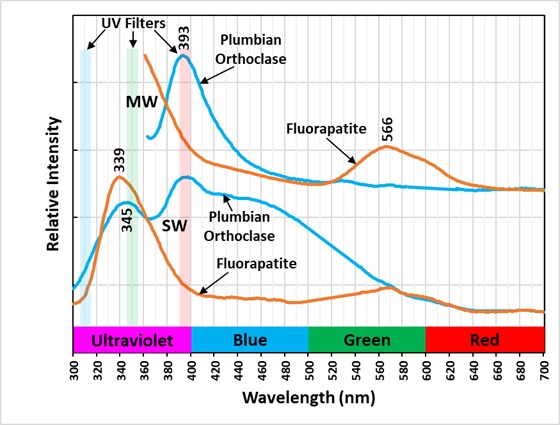Plumbian Orthoclase and Fluorapatite from Broken Hill, Australia
Contributed by: Michael Crawford
Date: Jul 28th, 2025
Locality: Broken Hill, Broken Hill district, Yancowinna Co., New South Wales, Australia (See on Mindat)
Size: 6 x 8 cm
Description:
This is a specimen of green plumbian feldspar (K(AlSi3O8) ) from Broken Hill, Australia. This green feldspar is associated with the lead / zinc deposits and occurs at several areas in the Broken Hill district. Various references describe the green potassium feldspar from Broken Hill as both microcline and orthoclase, but most analyses favor the orthoclase identification. Microcline has a triclinic crystal structure and orthoclase has a monoclinic structure. Both have the same chemical formula and XRD or optical analysis is needed to distinguish them. The type of crystal structure depends on the temperature of formation, the rate of cooling and the corresponding rate of crystallization. Slow crystallization favors microcline development, orthoclase crystallization occurs more quickly, and sanidine, another K-feldspar, has the highest rate of crystallization.
The green color is attributed to a lead ion (Pb2+) replacing a potassium ion (K+) in the orthoclase crystal structure. An aluminum ion (Al3+) needs to replace a silicon ion (Si4+) to maintain charge balance. Exposure to sunlight affects the green color. Pale green pieces have turned deeper green on prolonged exposure.
The shortwave emission spectra have two peaks in the ultraviolet region, one at 345 nm and another at 393 nm. I am not sure if lead is the activator for this ultraviolet fluorescence, or if there is another activator responsible for one of the peaks. The false color image shows the ultraviolet fluorescence of the orthoclase. There is also a broad peak in the blue and green visible region. Another activator causes this broad peak.
There is only one peak at 393 nm in the midwave emission spectrum and there is no broad peak in the blue and green visible region. The orthoclase fluorescence appears bluish white in the shortwave image because of the broad fluorescent peak in the visible blue and green. The orthoclase appears dark violet-blue in the midwave image because there is no blue-green visible fluorescence and only the longer wavelength shoulder of the 393 nm ultraviolet peak that extends into the visible violet and blue is imaged by the camera.
The specimen also has a small patch of fluorapatite that fluoresces bright yellow under midwave UV light. It is dimmer under shortwave UV light. The shortwave emission spectrum of this yellow fluorescence is a broad peak with a maximum at 566nm. Manganese causes the visible yellow fluorescence. The emission spectrum of fluorapatite also has a strong fluorescent peak in the ultraviolet region at 339 nm. This ultraviolet fluorescence is usually attributed to rare earth element activation.
The false color image shows the difference in the ultraviolet fluorescence of the plumbian orthoclase and fluorapatite. The false color image is composed of three images taken with 10 nm narrow bandpass centered at 310 nm, 350 cm and 394 nm and assigned to blue, green and red respectively. The filters are shown in the spectral plot. Fluorapatite appears green and the plumbian orthoclase is yellow.
Summary of luminescence responses:
Orthoclase (Mindat) (RRUFF)
- Fluorescence under Midwave (305nm LED) UV light: Blue
- Fluorescence under Shortwave (255nm LED) UV light: White
- Fluorescence under Midwave (305nm LED) UV light: Yellow
- Fluorescence under Shortwave (255nm LED) UV light: Yellow
- Fluorescence under Longwave (365nm LED) UV light: Blue





